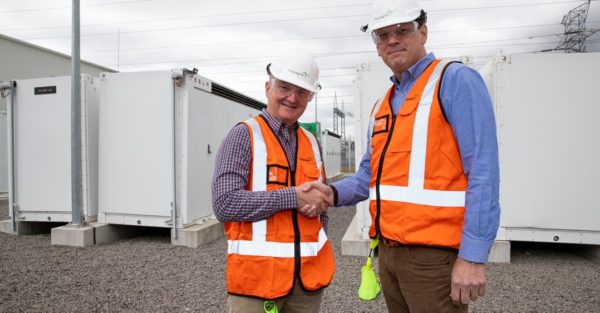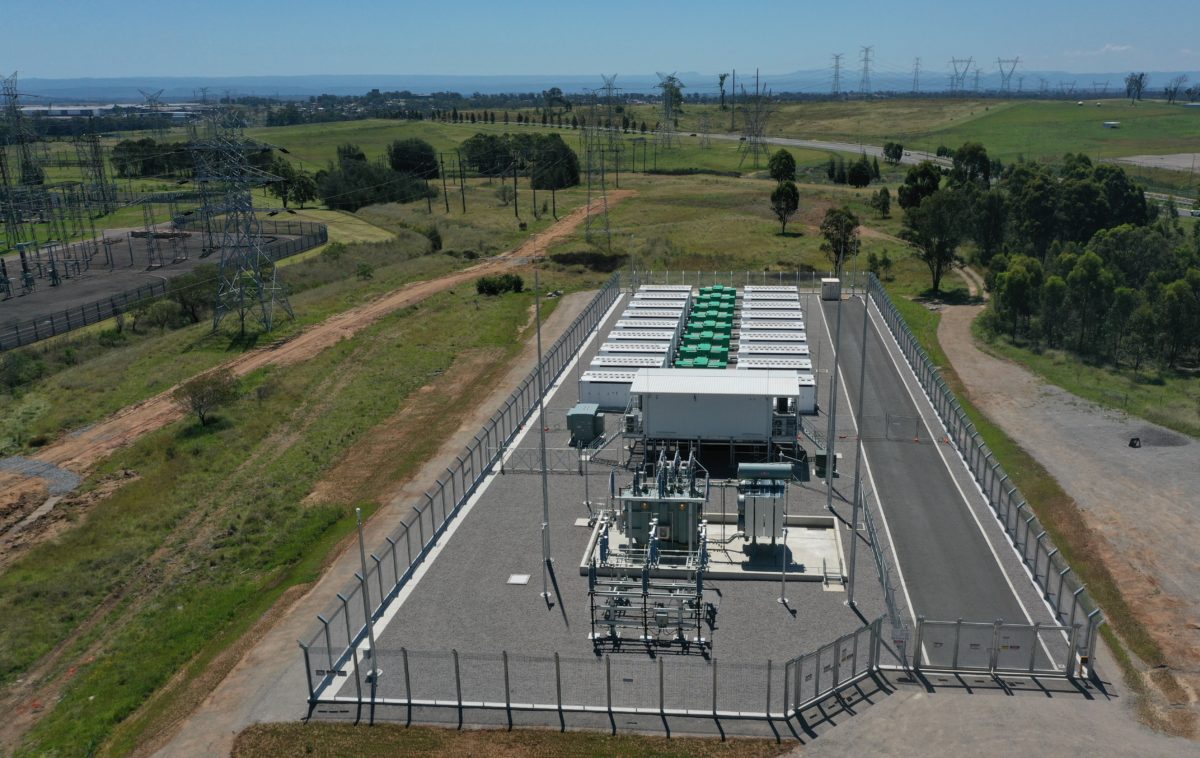Network owner Transgrid has confirmed the 50 MW/75 MWh Wallgrove Grid Battery in Western Sydney is now fully operational, delivering improved reliability and stability to the New South Wales (NSW) electricity network.
The $61.9 million (USD 41.5 million) Wallgrove Grid Battery has been installed adjacent to Transgrid’s Wallgrove substation in Western Sydney. To date, the Wallgrove battery has exported more than 23 GWh of energy, supplying the equivalent of the energy needs of 4,300 NSW households.
Developed by Transgrid in collaboration with the Australian arm of Spanish energy giant Iberdrola, the Wallgrove battery comprises 36 Tesla Megapack units. The system utilises Tesla’s “Virtual Machine Mode” to deliver synthetic inertia as a service as well as provide grid support and system strength to the energy network.
Transgrid Chief Executive Officer Brett Redman said the Wallgrove Grid Battery will demonstrate the technical capability of batteries with advanced inverter capabilities to substitute traditional inertia.
“It’s a proof of concept that the grid-forming technology, the inverter technology, the inertia support works, and now we’re able to say that it’s fully operational,” he said.
The power system currently relies on inertia provided by large turbines inside coal, gas and hydro generators to maintain a consistent frequency and help the system ride out any disturbances. As more wind and solar generation connects to the grid and fossil fuel-fired power plants are retired, alternate sources of inertia will be needed to stabilise the network.
NSW has the biggest coal fleet in the country, at more than 10 GW, but four of the five coal-fired generators are scheduled to close by 2033 at the latest. There is also widespread belief that the fifth generator could also close early.

Image: Transgrid
Redman said batteries can fill the gap created by the closure of the coal generators by using software to mimic the mechanical movement of turbines.
“Inertia is like riding a bike, when you take your feet off the pedals it keeps rolling, but not for long, which is why we need to maintain inertia in our energy system to keep it operating,” he said. “Currently synchronous generators or condensers can deliver inertia for stability, but batteries can also provide a greater range of benefits at a lower overall cost. They can also store excess renewable energy and then release it when consumers need it to help keep energy prices down.”
Transgrid will own and maintain the Wallgrove Grid Battery while Iberdrola will provide commercial services to the energy market, including dispatch control and frequency control ancillary services, ensuring the full capacity of the battery is utilised.
The Wallgrove announcement comes amid a flurry of activity in the energy storage market with the federal government-owned Australian Renewable Energy Agency (ARENA) announcing a $176 million investment which will deliver eight large-scale batteries with a combined 2 GW/4.2 GWh of storage capacity across the National Electricity Market.
The eight projects receiving funding are to be equipped with grid-forming inverter technology and Redman said the Wallgrove battery is an early demonstration of the inverter functionality that the funding round is supporting.
“Our trial of network services like synthetic inertia paved the way for this next generation of batteries and will provide critical learnings while also delivering grid stability at a lower cost for consumers,” he said.
This content is protected by copyright and may not be reused. If you want to cooperate with us and would like to reuse some of our content, please contact: editors@pv-magazine.com.









By submitting this form you agree to pv magazine using your data for the purposes of publishing your comment.
Your personal data will only be disclosed or otherwise transmitted to third parties for the purposes of spam filtering or if this is necessary for technical maintenance of the website. Any other transfer to third parties will not take place unless this is justified on the basis of applicable data protection regulations or if pv magazine is legally obliged to do so.
You may revoke this consent at any time with effect for the future, in which case your personal data will be deleted immediately. Otherwise, your data will be deleted if pv magazine has processed your request or the purpose of data storage is fulfilled.
Further information on data privacy can be found in our Data Protection Policy.